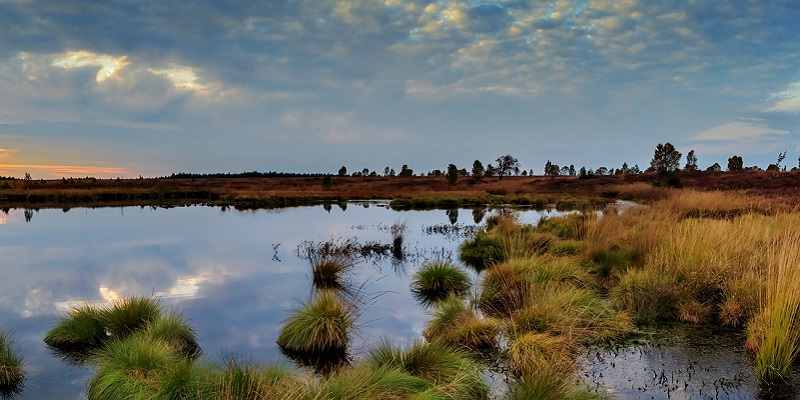Emissions from wetlands and permafrost impact climate targets

To limit the rise in global temperature levels to a maximum of 1.5 °C, fossil fuel emissions should be cut by an additional 20 per cent above previous estimations due to greenhouse gas emissions from wetlands and permafrost, according to new research.
Scientists, including Dr Sarah Chadburn from the University of Leeds, have used climate models to estimate natural wetland and permafrost response to climate change – including the effects on their greenhouse gas emissions – and the implications for rates of human fossil-fuel emissions.
Their research, published in Nature Geoscience (9 July) shows that global rates of methane emissions from natural wetlands and the release of carbon from thawing permafrost increase as global temperatures rise. These emissions further increase global temperatures, resulting in even more greenhouse gas emissions.
The study highlights that global emissions from wetlands and permafrost are not represented in most state-of-the-art climate models.
The researchers estimate that when emissions from natural wetlands and permafrost emissions are considered, in order to limit temperatures to the lower target of 1.5 °C set by the 2015 Paris Agreement requires additional reductions equivalent to five to six years of carbon emissions from human activities at current rates.
Dr Chadburn from the School of Earth and Environment at Leeds said: “We found that permafrost and methane emissions get more important as we consider lower global warming targets. This could make it much harder to achieve the target, and our results reinforce the urgency in reducing fossil fuel burning.”
Natural wetlands are waterlogged regions where the soils emit the greenhouse gas methane. The methane emissions are larger in warmer soils, therefore rising climates would cause an increase in methane emissions.
In permafrost regions the soil is permanently frozen, trapping large quantities of carbon in frozen organic matter. Warming climates cause the permafrost soil to thaw and emit carbon dioxide, and in some cases methane, into the atmosphere
Study lead author, Dr Edward Comyn-Platt from the UK Centre for Ecology and Hydrology said: “Greenhouse gas emissions from natural wetlands and permafrost regions are sensitive to climate change, primarily via changes in soil temperature.
“Changes in these emissions will alter the amount of greenhouse gases in the atmosphere and must be considered when estimating the human emissions compatible with the Paris Climate Agreement.”
Media coverage of the research has appeared in Science Daily, PhysOrg.com and Carbon Brief, with Priestley Centre Director Prof Piers Forster commenting: “The extra carbon released from thawing permafrost and warming wetlands would continue beyond the date of net-zero emissions and this would need to be countered for in order to consider carbon budgets applicable for 2100 and beyond.”
Image: Pixabay.com
